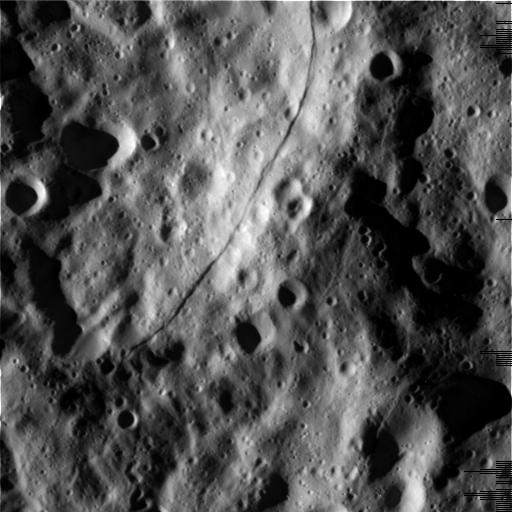NASA’s Cassini spacecraft recently captured a number of raw images depicting the battered icy Saturnian moon of Rhea.
They show an ancient, cratered surface bearing the scars of collisions with many space rocks.

Scientists are still trying to understand some of the curious features they see in these Rhea images, including a curving, narrow fracture or a graben, which is a block of ground lower than its surroundings and bordered by cliffs on either side.
Interestingly enough, this feature appears remarkably recent, cutting most of the craters it crosses, with only a few small craters superimposed.

Cassini flew by Rhea at an altitude of 620 miles (997 kilometers) on March 9, 2013. This flyby was designed primarily for the radio science sub-system to measure Rhea’s gravity field.
During its closest approach and while the radio science sub-system was measuring the icy satellite’s gravity field, the imaging team rode along and captured 12 images of Rhea’s rough and icy surface. Outbound from Rhea, Cassini’s cameras captured a set of global images from a distance of about 167,000 miles (269,000 kilometers).

Data from Cassini’s cosmic dust analyzer were also collected to try to detect any dusty debris flying off the surface from tiny meteoroid bombardments. These data will help scientists understand the rate at which “foreign” objects are raining into the Saturn system.
This was the mission’s fourth close encounter with Rhea. The spacecraft will pass the moon, but at a much greater distance, in a few more years.






